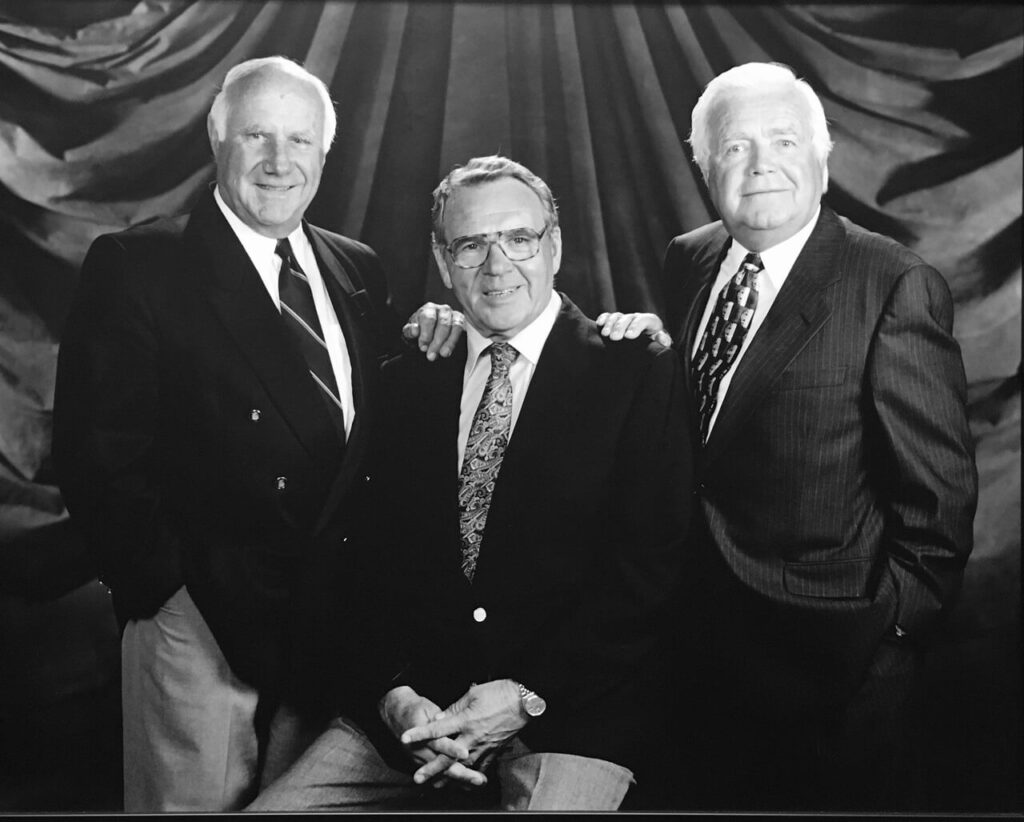Our Company
Merkburn Holdings
A Wealth of Experience
For over 55 years, Merkburn Holdings has been offering much more than a great place to do business. We work collaboratively with our tenants to design their own success stories within our walls.
Our professional management team takes great pride in developing long-term business relationships with those who come first – our tenants.

remember the past
Since 1969
Incorporated in 1969, Merkburn owns and manages close to one million square feet of commercial and industrial properties in the Ottawa region. Merkburn’s diversified real estate portfolio includes facilities for offices, warehouses and showrooms, as well as manufacturing and production facilities.
Merkburn has over 55 years’ experience in construction, renovating, investing and managing commercial real estate. As tenant requirements grow, Merkburn facilitates their expansion within our portfolio or can build new, expanded quarters to accommodate their growth.
The Team
Meet Our People
The Merkburn team is able to respond to space requirements and to provide bilingual service. We specialize in helping clients choose their ideal location and then design the space to suit their needs. Our commitment to helping tenants achieve their business objectives has resulted in many long-term relationships with companies that have stayed with Merkburn for many years
Peter Dooher
Kevin Rougeau
Matthew Schultz
Marlene Piitz
Stacey Kenney
Louisa Chan
Kasia Bernat
Jaquelyn Hatcher
Lindsay Dolman
Rick Pitman
Garry Poirier
Daniel Neilson
We Will Help You Every Step Of The Way
important things you should know
Questions And Answers
A commercial lease is a legally binding contract made between a landlord and a tenant for an office, industrial, flex, or retail property. The lease gives a tenant the right to use some or all a certain property for a business or commercial activity for a time in exchange for money paid to the landlord. Additionally, the lease outlines the rights and responsibilities of both the landlord and tenant during the lease term.
Most commercial leases run between 3-10 years in length, and often include an option to renew. Short term commercial leases are not out of the question; however, longer term leases are typically favorable to both tenants and landlords. Tenant perspective: Costly and disruptive to move and set up a new space “Do we really want to do this again next year?”. Landlord perspective: The length of the lease represents the landlord’s amortization schedule for leasing expenses – very challenging to justify incurring substantial expenses on a short-term lease.
The method used to estimate the amount of space your company needs should depend on the nature of your business and type of commercial space you require. Office tenants will often work with an estimate that is based on 100-200 useable square feet per employee, while industrial, flex, or retail tenants will use a different methodology altogether. Your landlord could be a good resource for determining your space requirements, as well as a commercial designer, architect, or realtor.
The Gross Up or Common Area Factor represents the tenant’s proportionate share of the common areas and mechanical areas of a building. Most multi-tenant office buildings have a common area factor of 12-18%, while industrial, retail, and flex are typically much lower because the buildings have less common area. The percentage factor is typically based on BOMA standards and is used to translate Useable areas into Rentable areas. For example, 4,000 sq. ft. of usable space in a multi-tenant office building with a 15% gross up would be advertised and rented based on 4,600 sq. ft. of rentable space. A tenant would pay rent on the Rentable square footage.
Basic Rent refers to the minimum or base amount of rent as set out in the lease excluding percentage rents or any other additional or operating costs and is typically intended to be fully Net to the Landlord.
Additional Rent refers to the amount of rent as set out in the lease for operating expenses related to your building and premises, including but not limited to; repairs & maintenance, property tax, capital expenditures, building insurance, landscaping & snow removal, management, utilities & janitorial. Additional Rent is adjusted annually based on the actual costs incurred in a calendar year. We would typically recommend tenants budget for a 3-5% annual increase to Additional Rent.
Depending on the space and building itself, the advertised Additional Rent may or may not be “all inclusive”. For example; industrial and retail tenants are often separately metered for utilities, and responsible for their own janitorial. When in doubt, ask your landlord what is included.
Municipalities determine what commercial uses are permitted at what properties and within which premises. Tenants are responsible for ensuring their proposed use complies with zoning by-laws, and building code. The City of Ottawa is a great resource for tenants as are architects familiar with Ontario Building Code. Note: Just because a building has zoning to support your use, this does not mean the premises in question will be code compliant.
Our Office
- 2191 Thurston Drive
- 613.224.5464
- info@merkburn.com
- Privacy Policy